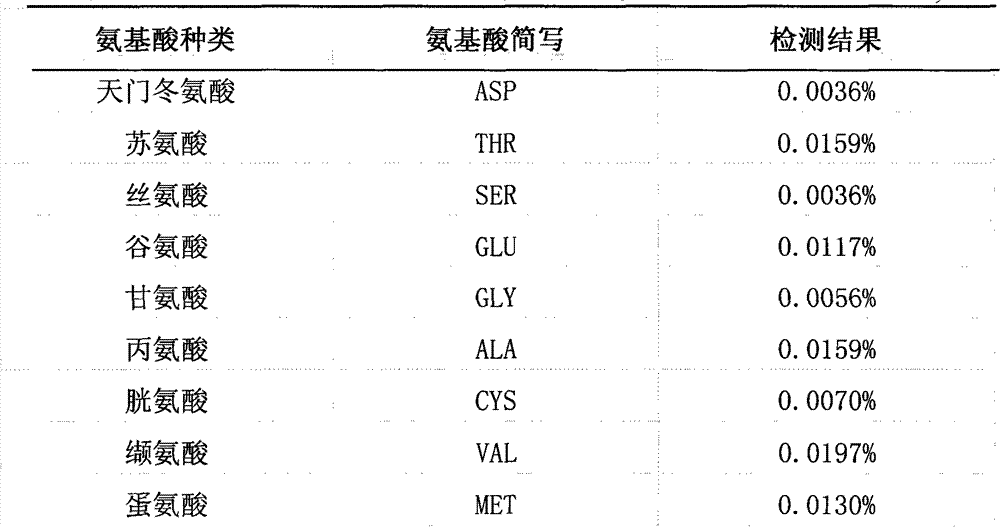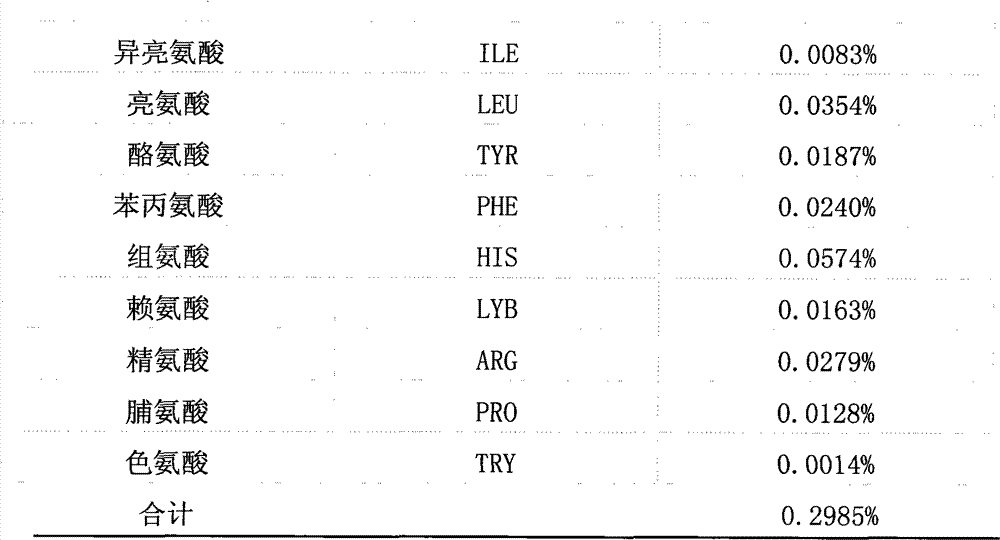Preparation method of safflower pollen
A safflower and pollen technology, applied in food preparation, pharmaceutical formulations, cosmetic preparations and other directions, can solve problems such as affecting the quality of honey brewing, affecting the reproduction of bee colonies, etc., to stabilize the bee industry, increase the income of pharmaceutical farmers, and improve economic added value. Effect
- Summary
- Abstract
- Description
- Claims
- Application Information
AI Technical Summary
Problems solved by technology
Method used
Image
Examples
Embodiment 1
[0018] a. Take 10kg of dried flower velvet of safflower (Carhamus tincwrius L), soak in 5 times the amount of deionized water according to the weight ratio, increase the temperature from room temperature to 20°C within 10 minutes, maintain it for 5 hours, and centrifuge at 800 rpm Machine centrifugation to obtain about 30kg of soaking liquid for the first time;
[0019] b. Add 4 times the amount of deionized water to the remaining safflower slag according to the weight ratio of the original dry velvet for soaking, and increase the temperature from room temperature to 20°C within 10°C, keep it for 5 hours, and centrifuge in a rotary centrifuge at 800 rpm , obtain the soaking solution for the second time, combine 80kg of the second soaking solution, and pass through a 250-mesh sieve to obtain the filtered soaking solution;
[0020] c. Put the filtered soaking solution in a transparent or translucent cylindrical container with a diameter: height=1:1, add 0.005% cellulase accordin...
Embodiment 2
[0025] a. Take 10kg of dried velvet of safflower (Carhamus tincwrius L), add 10 times the amount of deionized water to soak according to the weight ratio, increase the temperature from room temperature to 30°C within 20 minutes, keep it for 6 hours, and turn it at 1000 rpm Centrifuge in a centrifuge to obtain 40kg of soaking liquid for the first time;
[0026] b. Add 5 times the amount of deionized water to the remaining safflower slag according to the weight ratio of the original dry velvet for soaking. The temperature is raised from room temperature to 30°C within 20 minutes, and maintained for 6 hours. 1000 rpm rotary centrifuge Centrifuge to obtain the second soaking solution, combine the second soaking solution 90kg, and then pass through a 280-mesh sieve to obtain the filtered soaking solution;
[0027] c. Put the filtered soaking solution in a transparent or translucent cylindrical container with diameter: height = 1:2, add 0.007% cellulase according to the weight ratio...
Embodiment 3
[0032] a. Take 10kg of dried velvet of safflower (Carhamus tincwrius L), add 15 times the amount of deionized water to soak according to the weight ratio, increase the temperature from room temperature to 50°C within 40 minutes, keep it for 8 hours, and turn it at 1200 rpm Centrifuge in a centrifuge to obtain 50kg of soaking solution for the first time;
[0033] b. Add 7 times the amount of deionized water to the remaining safflower slag according to the weight ratio of the original dry velvet for soaking. The temperature is raised from room temperature to 50°C within 40 minutes, and maintained for 8 hours. 1200 rpm rotary centrifuge Centrifuge to obtain the second soaking solution, combine the second soaking solution 110kg, and pass through a 300-mesh sieve to obtain the filtered soaking solution;
[0034] c. Place the filtered soaking solution in a transparent or translucent cylindrical container with a diameter: height=1:3, add 0.008% cellulase according to the weight ratio...
PUM
 Login to View More
Login to View More Abstract
Description
Claims
Application Information
 Login to View More
Login to View More - R&D
- Intellectual Property
- Life Sciences
- Materials
- Tech Scout
- Unparalleled Data Quality
- Higher Quality Content
- 60% Fewer Hallucinations
Browse by: Latest US Patents, China's latest patents, Technical Efficacy Thesaurus, Application Domain, Technology Topic, Popular Technical Reports.
© 2025 PatSnap. All rights reserved.Legal|Privacy policy|Modern Slavery Act Transparency Statement|Sitemap|About US| Contact US: help@patsnap.com


